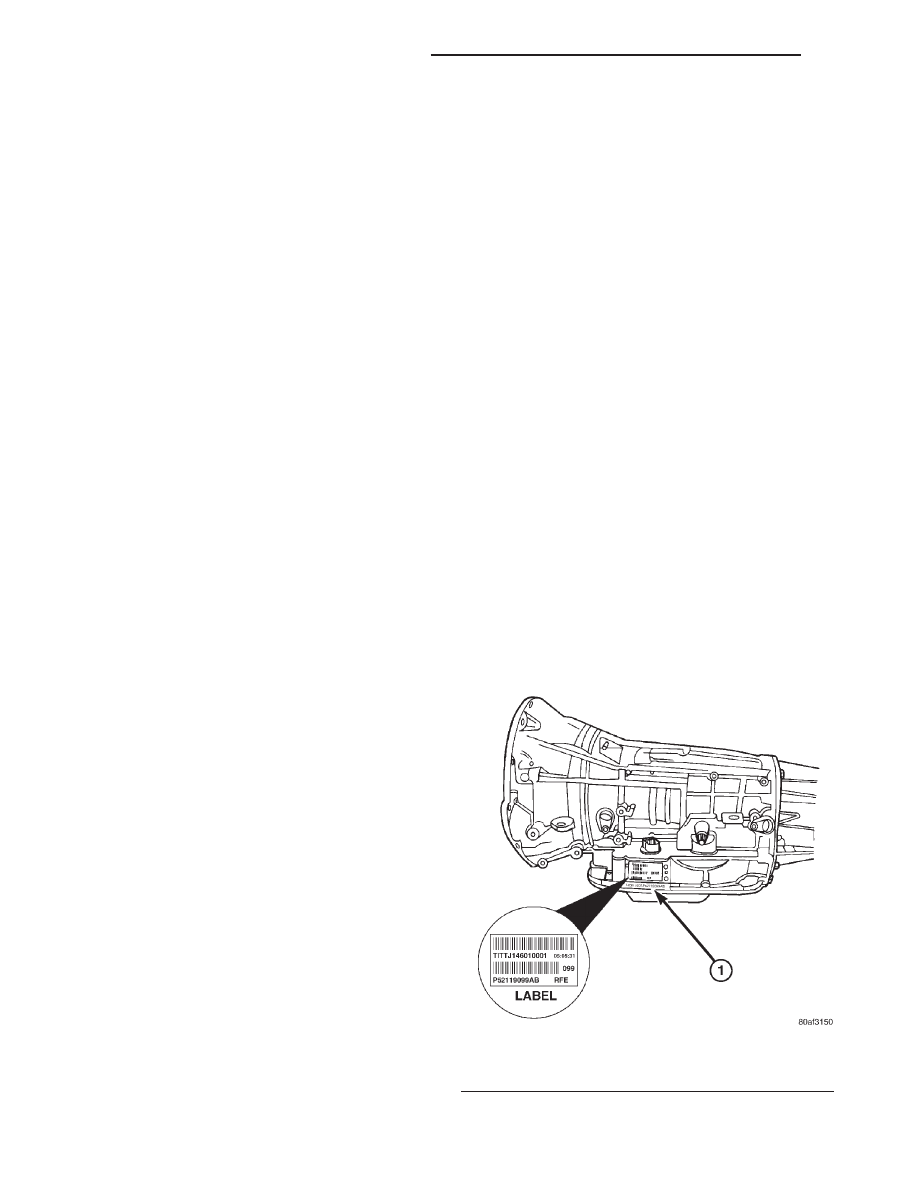Dodge Dakota (R1). Manual - part 699

SHIFT MECHANISM
SOLENOID SWITCH VALVE
SOLENOIDS
TORQUE CONVERTER
TRANSMISSION CONTROL RELAY
TRANSMISSION RANGE SENSOR
DESCRIPTION . . . . . . . . . . . . . . . . . . . . . . . . . . 527
OPERATION. . . . . . . . . . . . . . . . . . . . . . . . . . . . 527
TRANSMISSION SOLENOID/TRS ASSEMBLY
TRANSMISSION TEMPERATURE SENSOR
VALVE BODY
AUTOMATIC TRANSMISSION -
45RFE
DESCRIPTION
The 45RFE automatic transmission is a sophisti-
cated, multi-range, electronically controlled transmis-
sion
which
combines
optimized
gear
ratios
for
responsive performance, state of the art efficiency fea-
tures and low NVH. Other features include driver
adaptive shifting and three planetary gear sets to pro-
vide wide ratio capability with precise ratio steps for
optimum driveability. The three planetary gear sets
also make available a unique alternate second gear
ratio. The primary 2nd gear ratio fits between 1st and
3rd gears for normal through-gear accelerations. The
alternate second gear ratio (2prime) allows smoother
4-2 kickdowns at high speeds to provide 2nd gear pass-
ing performance over a wider highway cruising range.
The hydraulic portion of the transmission consists
of the transmission fluid, fluid passages, hydraulic
valves, and various line pressure control components.
The primary mechanical components of the trans-
mission consist of the following:
• Three multiple disc input clutches
• Three multiple disc holding clutches
• Five hydraulic accumulators
• Three planetary gear sets
• Dual Stage Hydraulic oil pump
• Valve body
• Solenoid pack
The TCM is the “heart” or “brain” of the electronic
control system and relies on information from vari-
ous direct and indirect inputs (sensors, switches, etc.)
to determine driver demand and vehicle operating
conditions. With this information, the TCM can cal-
culate and perform timely and quality shifts through
various output or control devices (solenoid pack,
transmission control relay, etc.).
TRANSMISSION IDENTIFICATION
Transmission identification numbers are stamped
on the left side of the case just above the oil pan
sealing surface (Fig. 1). Refer to this information
when ordering replacement parts. A label is attached
to the transmission case above the stamped numbers.
The label gives additional information which may
also be necessary for identification purposes.
Fig. 1 Transmission Part And Serial Number
Location
1 - IDENTIFICATION NUMBERS (STAMPED)
21 - 440
AUTOMATIC TRANSMISSION - 45RFE
AN